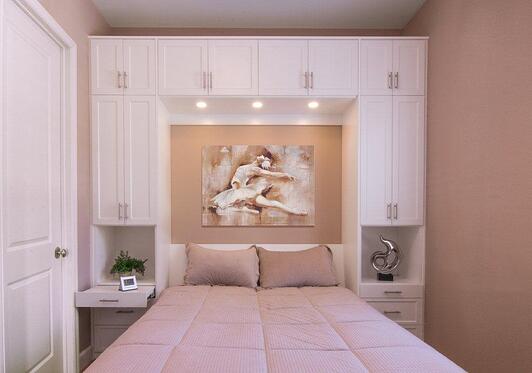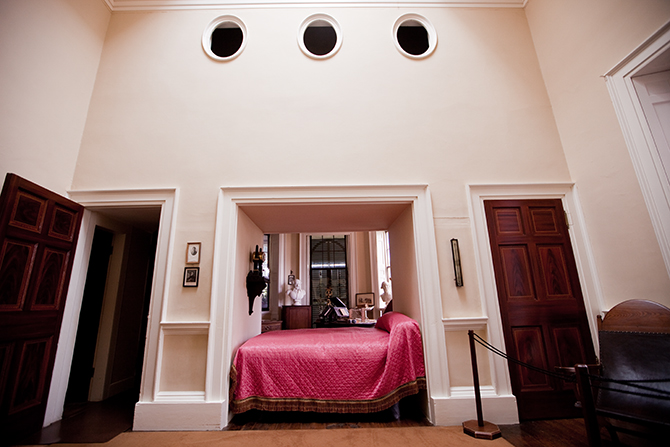Hideaway or foldaway beds have been present for many years in various forms. According to Monticello.org, the first known to date was Thomas Jefferson’s alcove bed. This one-of-a-kind style featured a bed that was lodged in a wall, nook-like area. Mentioned by SFCityGuides.org, Sears and Roebuck showcased a variety of foldaway beds in their 1895 catalogue. So the general idea has been around for some decades. But the actual Murphy bed/wall bed did not come to fruition until the early 1900s. And it has definitely advanced since then. Don’t know much about Murphy beds/wall beds? From the past to present, Valet Custom Cabinets & Closets can teach you all about them!
Thomas Jefferson's Alcove Bed - Photos: Jim Merithew/Wired.com
William Murphy, a Columbia, Calif. native, lived as a bachelor in a small studio apartment in San Francisco, Calif. In his small living space located at 625 Bush Street, he often entertained many guests. Naturally, his company would be exposed to his bed and all else typical to a bedroom. Murphy immediately thought to solve this problem. That same year he paired with a local blacksmith to create what is now called the Murphy bed/wall bed. Soon after marrying his girlfriend, Murphy established his own Murphy bed/wall bed building company. In 1918, his design was officially patented with the United States Patent and Trademark Office (USPTO).
Murphy beds/wall beds became increasingly popular for Northern California residents that lived in downtown city apartments, especially, “after the San Francisco Earthquake and Fire of 1906,” said Susan Saperstein and Peter Field of SFCityGuides.org. The clever alternative to a traditional bed became a trend for people living in other heavily populated, urban areas such as Chicago and New York. This innovation enabled a small room to double as a living room and bedroom.

Antique White Shaker Wall Bed by Valet Custom Cabinets & Closets
Not only is the Murphy bed/wall bed just as popular now, it has evolved to take on much more advanced mechanisms. The two most common are the piston-lift and spring counter-balancing system. According to Larry Fox, President of Valet Custom Cabinets & Closets, “hydraulic piston mechanisms are often visible on the interior sides of the bed cabinet and detract from the aesthetics of the furniture. If one or both pistons fail or lose pressure, the Murphy bed/wall bed may become extremely difficult to open.”
Valet Custom Cabinets & Closets opts for the latter option. The spring counter-balancing system is aesthetically appealing and less prone to malfunction. Murphy beds/wall beds using this mechanism will typically have seven to nine advanced chrome/silicone springs placed underneath the mattress on each side. Before being released, the chrome/silicone spring entered a 2,000 cycle test to assure functionality and safety. In the rare event that it fails, the Murphy bed/wall bed will become slightly heavier to lift until repair.
Murphy beds/wall beds from Valet Custom Cabinets & Closets have the following benefits:
- Increased room functionality with a combined home office/guestroom
- Cleaner, neater looking room
- Maximized space in a room that cannot accommodate a traditional bed
- A much more comfortable alternative to sofa beds
Did we teach you enough? If your answer is no, take the time to view more Murphy bed/wall bed information here!

